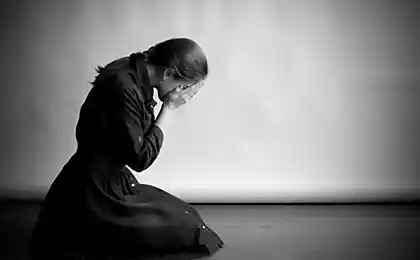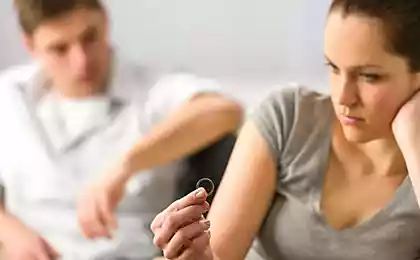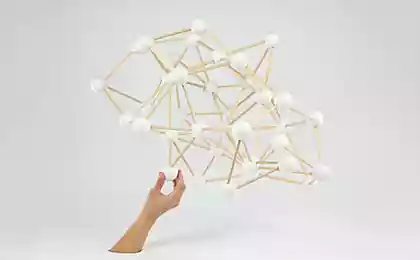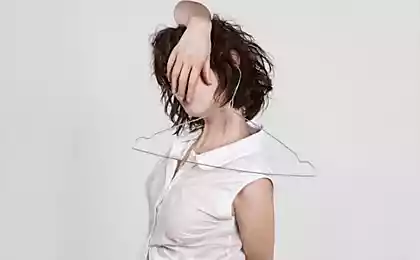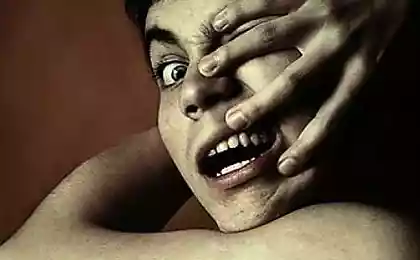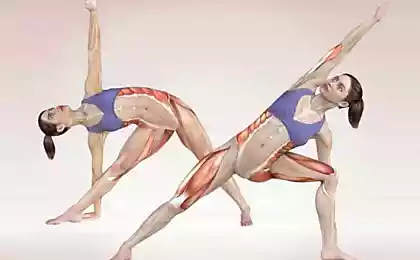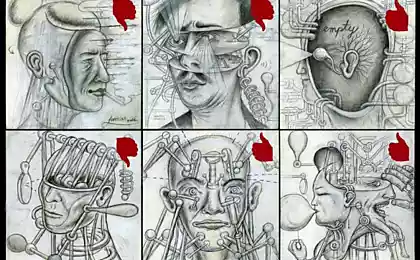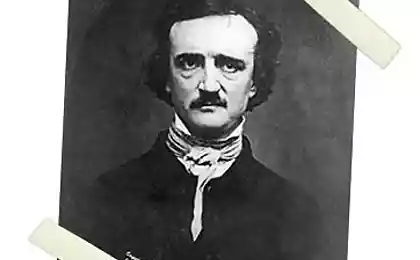503
What is seasonal affective disorder
Thirty five million nine hundred seventy seven thousand three hundred fifty four
© Sara Andreasson
The end of autumn and winter — a gloomy time. People who suffer from certain mental disorders, often suffer in the colder months, more than ever, — and others too have hard times. Why the change of seasons affects the body, how to distinguish between seasonal affective disorder from simple depression and how to deal with it? Criteria for diagnosis the First thing is to begin: seasonal affective disorder (SAD) is not just an autumn melancholy. Moreover, from the point of view of psychiatry it's not even self-diagnosis. According to the tenth edition of the International classification of diseases (ICD-10), it is considered a "feature of the current" major depressive and bipolar affective disorders. However, the term "seasonal affective disorder" is often used to denote the normal displacement of biorhythms and winter lethargy. It leads people astray and makes you think that they are having serious mental problems for which the necessary medicines and medical help.
What happens to a healthy person in the autumn-winter period? Seasonal fluctuations of the vital functions characteristic of warm-blooded animals, including humans. In the winter animals and humans there is a decrease in metabolic rate and locomotor activity during the spring and summer — activation of physiological processes. One begins a little more than sleep and eat, he is too lazy to get up in the morning and want to stay longer in bed. In a bad mood and whining — another satellite of cloudy weather and long nights. However, neither the therapist did not deliver in this case, the diagnosis. Sad and lazy in the winter because of the lack of sunlight is fine. In the end, a warm-blooded creature does sleep besprobudnym sleep in the colder months.
SAD differs from depression more severe symptoms: too much sleep, morning sickness and difficulty in waking up, eating, especially if we are talking about carbohydrate-rich food, the appearance of excess weight. In addition, the person with seasonal affective disorder don't have enough energy, it is difficult to focus and follow through, he is withdrawing from friends, family, he did not want to chat and have sex. All of this leads to pessimism, anguish, sense of hopelessness and lack of enjoyment of life, which is particularly characteristic for patients suffering from SAD in the winter. While spring and summer seasonal affective disorder, which are less common than their autumn-winter counterpart, has a different look. Here the list of insomnia, anxiety, irritability, loss of appetite and weight loss.
To a therapist or psychiatrist could make a diagnosis, "a feature of seasonal patterns" should meet four criteria:
— depressive episodes at certain times of the year;
— remission (in the case of major depressive disorder) or mania/hypomania (in the case of bipolar disorder) as a characteristic time of year;
— duration for two years or more without large non-seasonal depressive episodes;
— the numerical superiority of seasonal depressive episodes over all others for life.
This addition to the classic seasonal affective disorder exists, and its subsyndromal subspecies (SSAD) with the smoothed pattern of manifestation. It helps to diagnose all the same criteria, but it can only be a psychologist or a psychiatrist, and not the author of the popular science website or acquaintance who is interested in psychology.

Reasons
The exact causes of seasonal affective disorder is still unknown. "To explain this, there are several theories, says Professor Norman Rosenthal, author of "Winter sadness" ("Winter Blues"), the world's first described seasonal affective disorder. Among reasons cited are a slowing down of the process of producing serotonin, the insensitivity of the eye to light and anomalous shift circadian rhythms. Some people with SAD have pathology in the genes responsible for distribution of serotonin or in the sensitivity of the retina that may arise due to violation of the production of retinal pigment — melanopsin. At least two of these causes may exist concurrently. Light therapy is one of the main methods of dealing with SAD is able to neutralize their action."
Workout and daily routine
Among the major medicines — the simple things: light, sports, diet and sleep, fellowship. People who have friends and relatives with SAD and SSAD, it is important to know that even if a person is not committed to contact, attention and love he needed. Seasonal affective disorder (as its an easier option) is generally treated at home, not in the office of professional and especially not in a hospital.
Subsyndrome affective disorder neutralize exclusively to sports, stay in the light and day regimen. The duration of sleep should not exceed eight hours, and lie down and stand up you need to constantly at the same time. As an exercise, you can use any cute heart type of sports, from running and swimming to fitness and basketball. If health does not allow such classes, suitable for simple exercises and walking.
"In the world there are many different exercises, and the main factor of success for each of them is your ability to repeat them all the time, says Professor Rosenthal. — Do not misunderstand me: I do not advise you all to run or go belly dance, I suggest to find something that will please you and cheer you. This will make the classes permanent and you will extract from them the maximum benefit".
Light treatment
People with SAD and SSAD need to spend more time outside in the daytime. "The bright light of the early morning is a powerful, fast and effective therapy in the case of seasonal depression — said Norman Rosenthal. — Light is a kind of nutrient for these patients."
Light therapy is of several types. For example, in the room you can put a special "swetest", which emit much more light than an ordinary bulb. It emits a bright white "polnometrajnyi" light power of 10 000 Lux or blue light capacity of 350 Lux with a wavelength of 500 nm. The second type doctors choose less often, because with her patients begin to complain of discomfort and boredom. The latter is not surprising: in the course of therapy to sit in front of the device need 30 to 60 minutes, with open eyes, not staring at the light source directly. The time of day that the doctor picks up for the session depends on the characteristics of circadian rhythms of the patient, so that each has individually.
Another technology of light therapy is called dawn simulation. In this case, the device emits a dim, gradually increasing light that is activated when the person is sleeping. Today there are many devices and even alarm clocks with function of simulation dawn. Some studies show that this treatment can be 83% more efficient use of the light box, or svetosila.
Finnish experts also use another treatment option, when a bright light goes directly into photosensitive region of the brain through the ear canal. Their research shows that 92% of patients with seasonal affective disorder feel significant relief after such treatment. In addition, some doctors advise the use of heliostats: devices, computer-controlled, which reflect sunlight and redirect it into the Windows of a home or office.
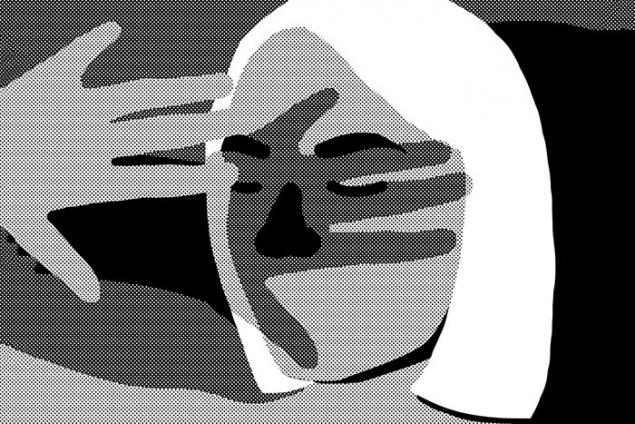
Melatonin and ionized air
Medical treatment for seasonal affective disorder is used not very active. Basically, the speech in this case goes about the intake of melatonin — the sleep hormone that is used to adjust circadian rhythms. He has to take it at certain times and in small doses. Today melatonin is also used to treat insomnia and other sleep disorders. As with any medication, he has encountered side effects e.g. vivid dreams and even nightmares, which in the normal state can not see.
Patients with SAD helps and negative air ionization: according to research, it proved effective in 47.9% of cases. Air ionizer (not to be confused with ozonator) — a device generating negative ions gases: oxygen and nitrogen. The ionized air does not smell, but in the house creates a noticeable feeling of freshness and purity. Negative ions attract harmful particles, purifying the air from contaminants, dust and allergens. In the room with the ionizer in humans increases efficiency and improves the General condition. However, the use of such devices has its nuances. During their work "captured" harmful particles settle everywhere, so after ionization need to carry out wet cleaning. To be in the room with the ionizer it is impossible: in this case, particles can enter the respiratory tract. The risk of Contracting a viral infection, if someone in the house is sick, when the ionization increases many times.
Psychotherapy
Psychotherapy also helps to treat seasonal affective disorder. "Rooting depression means to be lonely, and a lot of people feel better when they find a mentor who leads them through the process, says Professor Rosenthal. A good therapist will help you to apply the advice for the treatment of seasonal affective disorder. In addition, there is the cognitive behavior therapy that is especially effective for SAD. It helps not only to survive the winter, but also reduce the chances of returning to depression in the following year."
Source: theoryandpractice.ru
© Sara Andreasson
The end of autumn and winter — a gloomy time. People who suffer from certain mental disorders, often suffer in the colder months, more than ever, — and others too have hard times. Why the change of seasons affects the body, how to distinguish between seasonal affective disorder from simple depression and how to deal with it? Criteria for diagnosis the First thing is to begin: seasonal affective disorder (SAD) is not just an autumn melancholy. Moreover, from the point of view of psychiatry it's not even self-diagnosis. According to the tenth edition of the International classification of diseases (ICD-10), it is considered a "feature of the current" major depressive and bipolar affective disorders. However, the term "seasonal affective disorder" is often used to denote the normal displacement of biorhythms and winter lethargy. It leads people astray and makes you think that they are having serious mental problems for which the necessary medicines and medical help.
What happens to a healthy person in the autumn-winter period? Seasonal fluctuations of the vital functions characteristic of warm-blooded animals, including humans. In the winter animals and humans there is a decrease in metabolic rate and locomotor activity during the spring and summer — activation of physiological processes. One begins a little more than sleep and eat, he is too lazy to get up in the morning and want to stay longer in bed. In a bad mood and whining — another satellite of cloudy weather and long nights. However, neither the therapist did not deliver in this case, the diagnosis. Sad and lazy in the winter because of the lack of sunlight is fine. In the end, a warm-blooded creature does sleep besprobudnym sleep in the colder months.
SAD differs from depression more severe symptoms: too much sleep, morning sickness and difficulty in waking up, eating, especially if we are talking about carbohydrate-rich food, the appearance of excess weight. In addition, the person with seasonal affective disorder don't have enough energy, it is difficult to focus and follow through, he is withdrawing from friends, family, he did not want to chat and have sex. All of this leads to pessimism, anguish, sense of hopelessness and lack of enjoyment of life, which is particularly characteristic for patients suffering from SAD in the winter. While spring and summer seasonal affective disorder, which are less common than their autumn-winter counterpart, has a different look. Here the list of insomnia, anxiety, irritability, loss of appetite and weight loss.
To a therapist or psychiatrist could make a diagnosis, "a feature of seasonal patterns" should meet four criteria:
— depressive episodes at certain times of the year;
— remission (in the case of major depressive disorder) or mania/hypomania (in the case of bipolar disorder) as a characteristic time of year;
— duration for two years or more without large non-seasonal depressive episodes;
— the numerical superiority of seasonal depressive episodes over all others for life.
This addition to the classic seasonal affective disorder exists, and its subsyndromal subspecies (SSAD) with the smoothed pattern of manifestation. It helps to diagnose all the same criteria, but it can only be a psychologist or a psychiatrist, and not the author of the popular science website or acquaintance who is interested in psychology.

Reasons
The exact causes of seasonal affective disorder is still unknown. "To explain this, there are several theories, says Professor Norman Rosenthal, author of "Winter sadness" ("Winter Blues"), the world's first described seasonal affective disorder. Among reasons cited are a slowing down of the process of producing serotonin, the insensitivity of the eye to light and anomalous shift circadian rhythms. Some people with SAD have pathology in the genes responsible for distribution of serotonin or in the sensitivity of the retina that may arise due to violation of the production of retinal pigment — melanopsin. At least two of these causes may exist concurrently. Light therapy is one of the main methods of dealing with SAD is able to neutralize their action."
Workout and daily routine
Among the major medicines — the simple things: light, sports, diet and sleep, fellowship. People who have friends and relatives with SAD and SSAD, it is important to know that even if a person is not committed to contact, attention and love he needed. Seasonal affective disorder (as its an easier option) is generally treated at home, not in the office of professional and especially not in a hospital.
Subsyndrome affective disorder neutralize exclusively to sports, stay in the light and day regimen. The duration of sleep should not exceed eight hours, and lie down and stand up you need to constantly at the same time. As an exercise, you can use any cute heart type of sports, from running and swimming to fitness and basketball. If health does not allow such classes, suitable for simple exercises and walking.
"In the world there are many different exercises, and the main factor of success for each of them is your ability to repeat them all the time, says Professor Rosenthal. — Do not misunderstand me: I do not advise you all to run or go belly dance, I suggest to find something that will please you and cheer you. This will make the classes permanent and you will extract from them the maximum benefit".
Light treatment
People with SAD and SSAD need to spend more time outside in the daytime. "The bright light of the early morning is a powerful, fast and effective therapy in the case of seasonal depression — said Norman Rosenthal. — Light is a kind of nutrient for these patients."
Light therapy is of several types. For example, in the room you can put a special "swetest", which emit much more light than an ordinary bulb. It emits a bright white "polnometrajnyi" light power of 10 000 Lux or blue light capacity of 350 Lux with a wavelength of 500 nm. The second type doctors choose less often, because with her patients begin to complain of discomfort and boredom. The latter is not surprising: in the course of therapy to sit in front of the device need 30 to 60 minutes, with open eyes, not staring at the light source directly. The time of day that the doctor picks up for the session depends on the characteristics of circadian rhythms of the patient, so that each has individually.
Another technology of light therapy is called dawn simulation. In this case, the device emits a dim, gradually increasing light that is activated when the person is sleeping. Today there are many devices and even alarm clocks with function of simulation dawn. Some studies show that this treatment can be 83% more efficient use of the light box, or svetosila.
Finnish experts also use another treatment option, when a bright light goes directly into photosensitive region of the brain through the ear canal. Their research shows that 92% of patients with seasonal affective disorder feel significant relief after such treatment. In addition, some doctors advise the use of heliostats: devices, computer-controlled, which reflect sunlight and redirect it into the Windows of a home or office.

Melatonin and ionized air
Medical treatment for seasonal affective disorder is used not very active. Basically, the speech in this case goes about the intake of melatonin — the sleep hormone that is used to adjust circadian rhythms. He has to take it at certain times and in small doses. Today melatonin is also used to treat insomnia and other sleep disorders. As with any medication, he has encountered side effects e.g. vivid dreams and even nightmares, which in the normal state can not see.
Patients with SAD helps and negative air ionization: according to research, it proved effective in 47.9% of cases. Air ionizer (not to be confused with ozonator) — a device generating negative ions gases: oxygen and nitrogen. The ionized air does not smell, but in the house creates a noticeable feeling of freshness and purity. Negative ions attract harmful particles, purifying the air from contaminants, dust and allergens. In the room with the ionizer in humans increases efficiency and improves the General condition. However, the use of such devices has its nuances. During their work "captured" harmful particles settle everywhere, so after ionization need to carry out wet cleaning. To be in the room with the ionizer it is impossible: in this case, particles can enter the respiratory tract. The risk of Contracting a viral infection, if someone in the house is sick, when the ionization increases many times.
Psychotherapy
Psychotherapy also helps to treat seasonal affective disorder. "Rooting depression means to be lonely, and a lot of people feel better when they find a mentor who leads them through the process, says Professor Rosenthal. A good therapist will help you to apply the advice for the treatment of seasonal affective disorder. In addition, there is the cognitive behavior therapy that is especially effective for SAD. It helps not only to survive the winter, but also reduce the chances of returning to depression in the following year."
Source: theoryandpractice.ru
